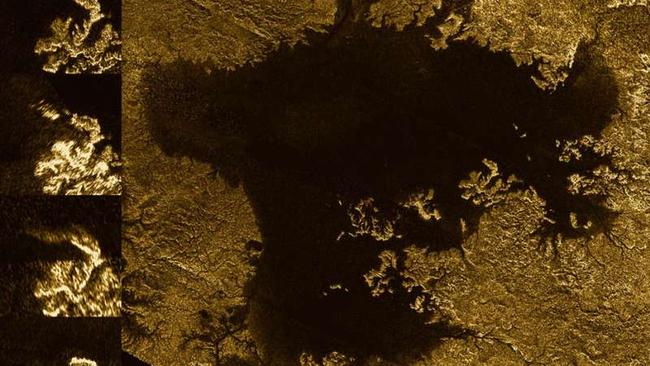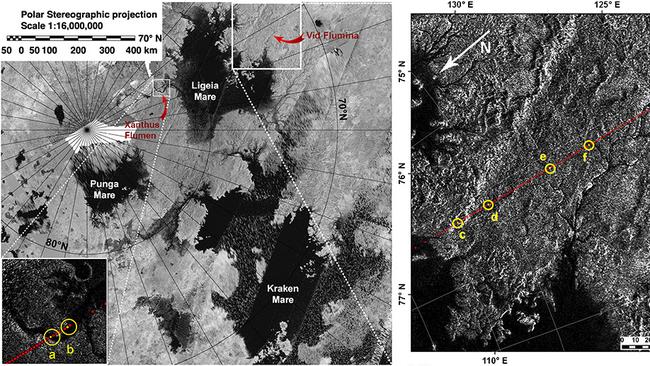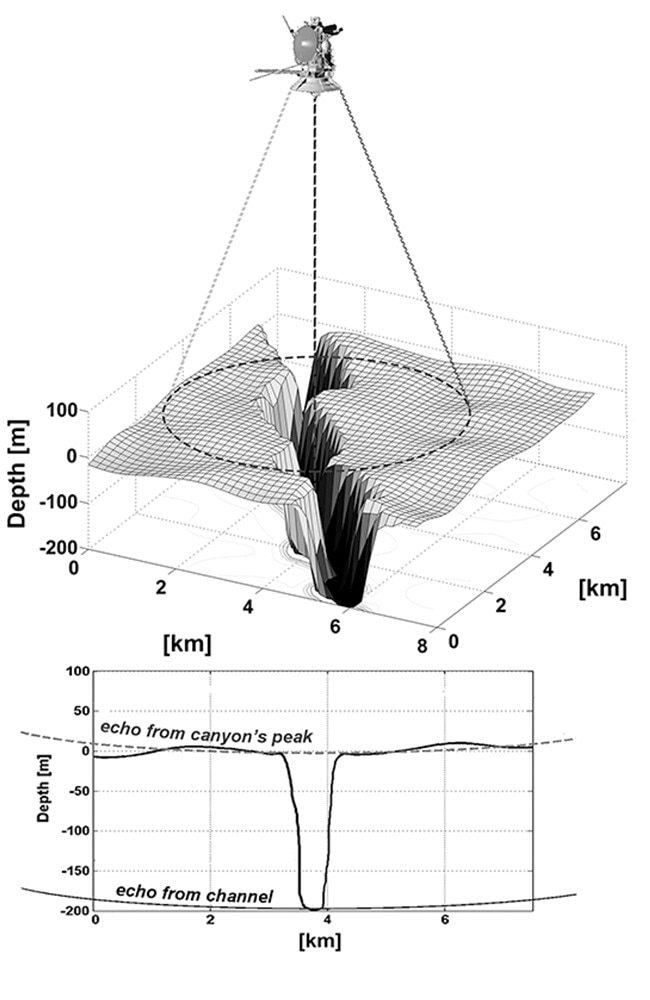Cassini space probe finds grand canyons filled with liquid methane on surface of Titan
SATURN’s frigid moon Titan just got more alien. It’s not just a giant iceblock. New photos reveal it’s covered with grand canyons, filled with a glistening liquid.

SATURN’s frigid moon Titan just got more alien. It’s not just a giant iceblock. New photos reveal it’s covered with grand canyons, filled with a glistening liquid.
Titan’s surface is shrouded by a thick atmosphere.
So the only way to peer beneath it is to send down a probe, or use radar.
A study published in the journal Geophysical Research Letters has examined a variety of radar scans gathered by the space probe Cassini when it skimmed past the moon in May 2013.
The end-result is a picture of a world which looks remarkably Earth-like.
But only from a distance.
Radar finds deep canyons on Saturn's moon Titan flooded with liquid hydrocarbons https://t.co/khpburu0fk pic.twitter.com/EWWgjzx4TB
— CassiniSaturn (@CassiniSaturn) August 10, 2016

The rivers, lakes and oceans are not water. They’re flooded with liquid hydrocarbons.
Nor are the mountains, shores and plains soil. They’re solid ice.
Now added to this alien landscape is the first evidence of deeply eroded canyons, hundreds of meters deep, carved out by flowing liquids.
EXPLORE MORE: ‘Alien megastructure’ star just got weirder
The new study has built up an image of an area of the moon named the sea of Ligeia Mare.
Feeding it is a network of kilometre-wide canyons of between 240 to 570 meters deep.
Radar returns bouncing back from inside these channels indicated they could be filled with a dark material.

Now combining the results of different radar scans have confirmed it to be liquid methane.
This was confirmed through the way the radar recorded occasional ‘glints’ — strong reflections from a very smooth surface — coming from within the canyons, just as sunlight glistens on a still pond of water.
RELATED: Dying stars may have planted the seeds of human life
That there are active geological processes capable of producing canyons came as a surprise.
“Earth is warm and rocky, with rivers of water, while Titan is cold and icy, with rivers of methane. And yet it’s remarkable that we find such similar features on both worlds,” says Alex Hayes, a Cassini radar team associate and a co-author of the study.
On #Saturn's moon Titan, a labyrinth: https://t.co/1LHnRIfoAT and a ridge of jagged peaks: https://t.co/QOLRGmCDOM pic.twitter.com/4MT3xvLW4I
— CassiniSaturn (@CassiniSaturn) July 29, 2016
The research paper postulates they could be caused by geological uplift or changes in the level of the methane sea.
“It’s likely that a combination of these forces contributed to the formation of the deep canyons, but at present it’s not clear to what degree each was involved,” says Cassini radar analyst and study author Valerio Poggiali. “What is clear is that any description of Titan’s geological evolution needs to be able to explain how the canyons got there.”




